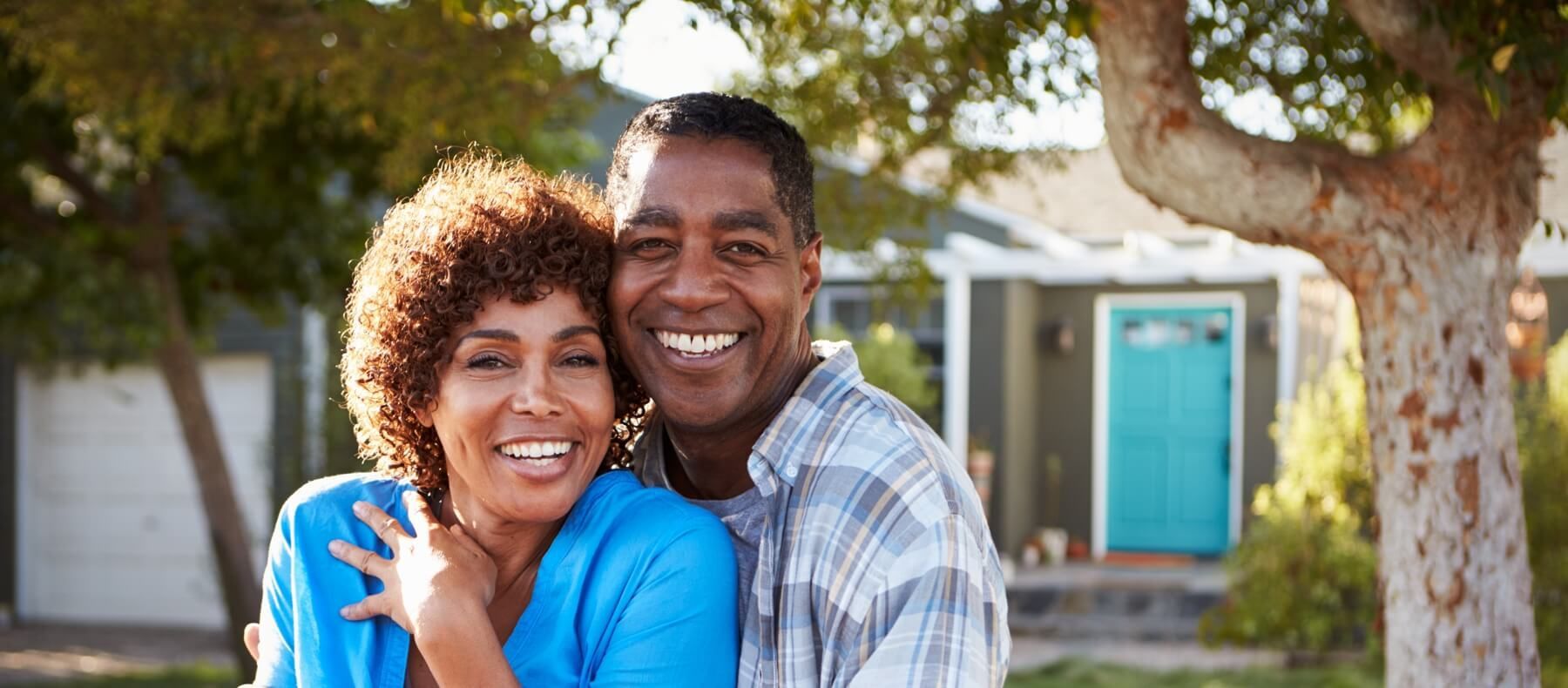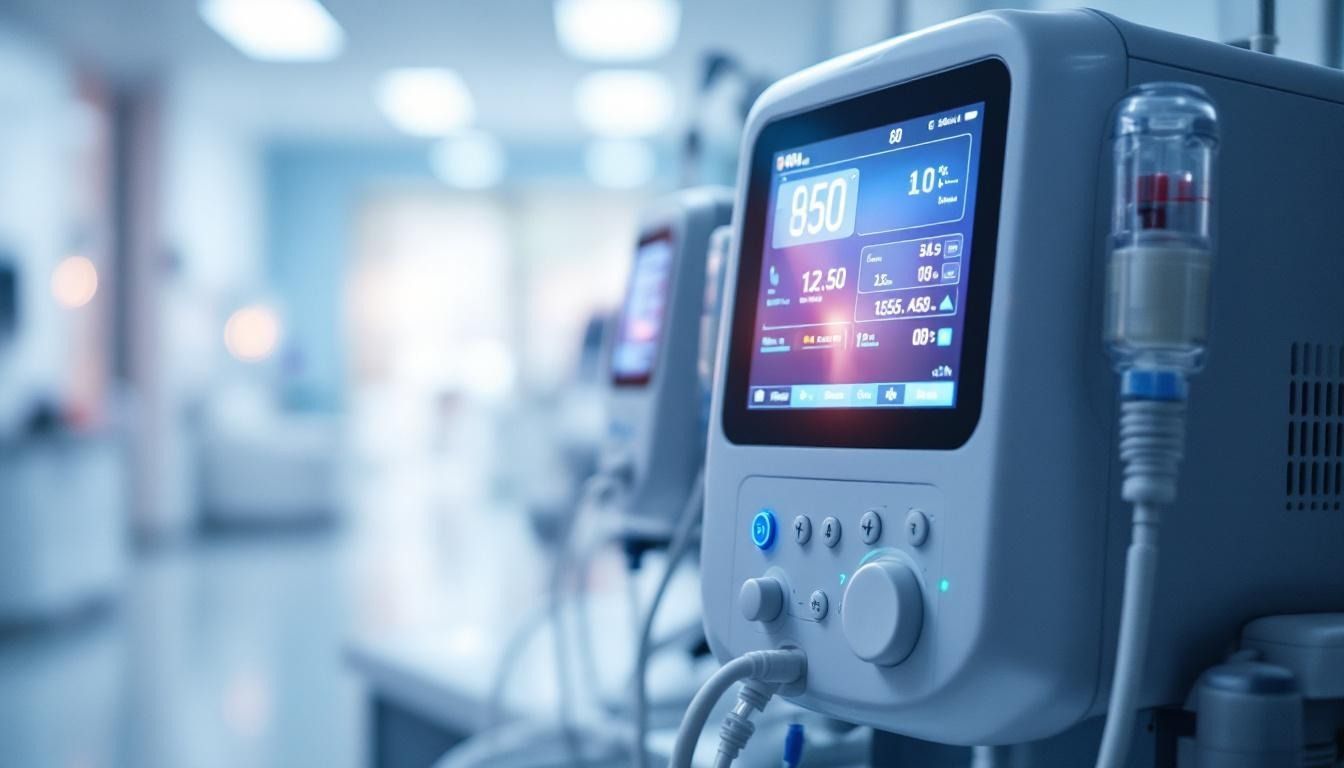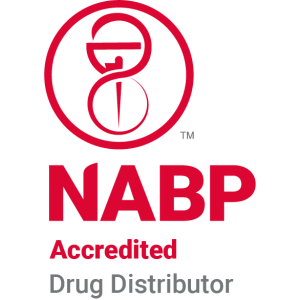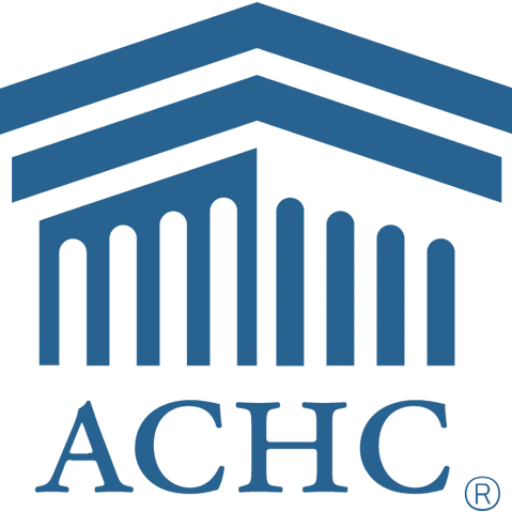How TPN boosts nutrition delivery
Understanding the Power of TPN
Total Parenteral Nutrition (TPN) stands as a critical intervention in modern medical care, offering comprehensive nutritional support to patients who are unable to obtain adequate nutrition through oral or enteral means. This intravenous feeding method bypasses the digestive system, providing a lifeline to individuals with severe gastrointestinal impairments and malnutrition. In this article, we delve into the mechanisms, components, and clinical implications of TPN, exploring how it boosts nutrition delivery and supports recovery for diverse patient populations.
The Mechanism of TPN: Bypassing the GI Tract

How does TPN mechanism improve nutrient absorption for individuals unable to digest food?
Total parenteral nutrition (TPN) fundamentally transforms how nutrition is delivered to individuals who cannot digest food due to various medical conditions. By administering essential nutrients directly into the bloodstream, TPN completely bypasses the gastrointestinal system, making it an indispensable option for patients suffering from conditions like intestinal obstructions or severe malnutrition.
The TPN solution is meticulously crafted, incorporating a well-balanced mixture of carbohydrates, proteins, fats, vitamins, and minerals that are tailored to meet the specific needs of each patient. This customization ensures comprehensive nutritional support, which is crucial for recovery and maintenance of health.
Moreover, TPN administration involves careful monitoring of fluid balance, electrolyte levels, and potential complications, such as hyperglycemia or infections. Regular assessments—often through lab evaluations—enable healthcare providers to optimize TPN therapy and adjust formulations as necessary. Thus, TPN not only enhances nutrient absorption efficiently but also significantly improves the nutritional status and overall quality of life for those unable to process food through conventional means.
Components and Administration of TPN

What are the components of TPN and how is it administered?
Total parenteral nutrition (TPN) is a specialized intravenous therapy designed for individuals unable to absorb nutrients through the gastrointestinal tract. The components of TPN solutions include:
-
Macronutrients:
- Carbohydrates: Primarily supplied as dextrose, offering substantial caloric intake.
- Proteins: Provided in the form of amino acids, usually tailored at a rate of 1.2 to 2.5 g/kg body weight per day.
- Fats: Delivered via lipid emulsions, contributing 20% to 30% of total caloric intake.
-
Micronutrients:
- Essential vitamins and trace minerals included to maintain overall health and recovery.
TPN is typically administered through a central line , as this method accommodates the hyperosmolar nature of the solution, thus minimizing the risk of irritation associated with peripheral veins.
Monitoring is critical during TPN therapy. Regular blood tests assess metabolic parameters such as glucose, electrolytes, and liver function, ensuring any complications—like hyperglycemia or electrolyte imbalances—are promptly managed. Depending on the patient's condition and response to treatment, TPN can be provided for varying lengths of time, either short-term or long-term. This tailored approach underscores the importance of individualized care in TPN administration.
When TPN Becomes Essential: Clinical Indications

What conditions necessitate the use of Total Parenteral Nutrition?
Total Parenteral Nutrition (TPN) becomes crucial in various clinical scenarios where the gastrointestinal (GI) tract is compromised. The following conditions exemplify the need for TPN:
- Severe Gastrointestinal Failure: This includes significant impairments such as severe Crohn's disease, ulcerative colitis, or complications following major surgeries, rendering the GI tract nonfunctional.
- Bowel Obstruction: Patients with bowel obstructions cannot digest food normally, making TPN essential for adequate nutritional support.
- Short Bowel Syndrome: This condition results from the surgical removal of sections of the small intestine, which hinders nutrient absorption and necessitates TPN.
- Gastrointestinal Fistulas: Fistulas can disrupt the normal absorption process and lead to nutrient losses, requiring total parenteral nutrition to maintain health.
- Anticipated NPO Status: TPN is indicated for patients who will remain NPO (nothing by mouth) for more than 7-10 days, especially if they exhibit severe malnutrition or are critically ill.
- Infants with Immature GI Systems: Premature infants or those with congenital malformations may require TPN due to inadequate GI functionality.
In cases where the gut is functional or there is a poor prognosis, healthcare providers typically avoid TPN, opting instead for alternative management strategies. Ensuring the right indication for TPN is vital to maximizing patient benefits and minimizing risks.
Comparing TPN with Tube Feeding: Choosing the Right Approach

How does TPN compare to other nutritional support methods like tube feeding?
Total Parenteral Nutrition (TPN) is often utilized when a patient’s gastrointestinal (GI) tract is non-functional, effectively delivering complete nutrition directly into the bloodstream through an intravenous catheter. This method is essential for individuals who cannot absorb nutrients orally due to conditions like gastrointestinal paralysis, Crohn's disease, or after significant surgeries.
On the other hand, tube feeding is a solution that directly administers nutrients to the GI tract. This method is typically less invasive and associated with lower complication risks compared to TPN. Tube feeding can be beneficial for patients who can tolerate it and have functioning digestive systems, making it the preferred choice whenever possible.
Here's a comparison of both methods:
| Feature | TPN | Tube Feeding |
|---|---|---|
| Nutritional Delivery Method | Intravenous directly into bloodstream | Directly to the GI tract via tube |
| Indications | Non-functional GI tract, severe malnutrition | Functional GI tract, swallowing issues |
| Risks | Infection, metabolic complications | Aspiration, discomfort, diarrhea |
| Monitoring Requirement | Intensive monitoring and lab work | Regular monitoring for tolerance |
| Patient Invasiveness | More invasive | Less invasive |
Both TPN and tube feeding have critical roles in nutrition support. Selecting between them hinges on the patient's medical condition and the functional status of their GI tract, ensuring that each patient receives the most appropriate care tailored to their needs.
Patient Populations and Specific Needs in TPN
How does TPN impact specific patient populations such as children or those with metabolic disorders?
Total Parenteral Nutrition (TPN) is especially critical for children who cannot consume enough nutrients through regular diet due to various medical conditions. In pediatric patients, TPN plays a vital role in ensuring proper growth and development. However, it’s not without risks; children, particularly those who are preterm, are susceptible to metabolic complications. Conditions such as glucose intolerance, liver dysfunction, or metabolic bone disease may arise, particularly if their TPN regimen does not adequately provide sufficient calcium and phosphate, leading to osteopenia.
Nutritional management for vulnerable populations
Tailoring TPN solutions is essential for addressing the specific needs of these vulnerable populations. Regular monitoring of trace elements and vitamins is critical to mitigate the potential for deficiencies. Research indicates that modifying TPN by decreasing glucose calories and increasing lipid content can enhance glucose tolerance and lessen hepatic complications, facilitating better outcomes for children.
In addition, patients with metabolic disorders require careful management of their TPN formulations to meet unique dietary needs while controlling their metabolic responses. For instance, metabolic conditions influencing insulin sensitivity necessitate adjustments in carbohydrate content and the incorporation of insulin therapy to manage potential hyperglycemia effectively.
Key Considerations
| Patient Group | Key Nutritional Needs | Challenges Encountered |
|---|---|---|
| Children | Growth-supportive nutrients | Risk of metabolic complications |
| Preterm infants | Phosphate and calcium monitoring | Osteopenia and nutrient deficiencies |
| Metabolic disorders | Customized macronutrient ratios | Insulin management and adjustments |
Thus, the excellent adaptability of TPN, coupled with careful oversight, fosters improved health outcomes while addressing the intricate requirements of at-risk populations.
Balancing Benefits and Risks: TPN Complications
What are the potential risks and complications of TPN, and how are they monitored?
Total parenteral nutrition (TPN) provides life-saving nutrients directly into the bloodstream for patients unable to utilize their digestive systems. However, this method carries potential risks and complications that healthcare providers must vigilantly monitor.
Potential Risks
- Infections : Patients are at risk of catheter-related infections due to the intravenous access needed for TPN.
- Metabolic Complications : Hyperglycemia and refeeding syndrome are common, with studies indicating that nearly 90% of TPN patients may face some metabolic issues.
- Liver Dysfunction : Long-term TPN can contribute to liver disease, necessitating regular evaluations of liver function.
- Electrolyte Imbalances : Imbalances such as hypophosphatemia can arise, especially during the initiation or reintroduction of feeding after prolonged fasting.
To mitigate these risks, careful monitoring practices are crucial. Blood glucose levels are regularly checked to manage potential hyperglycemia effectively. Likewise, electrolyte levels and liver function tests provide a comprehensive view of the patient’s metabolic state.
Monitoring Practices
A multidisciplinary nutrition support team plays a vital role in ongoing assessments. Regular blood tests are critical for checking:
- Blood Sugar Levels : To prevent complications related to high glucose.
- Electrolyte Balance : To catch any worrying trends before they escalate into critical conditions.
- Metabolic Markers : Ensuring that markers indicative of refeeding syndrome are carefully monitored during the first week of TPN initiation.
This structured approach allows for timely adjustments to the TPN formulation, improving patient safety and the efficacy of the nutritional support provided. Effective monitoring strategies help minimize complications, ensuring TPN fulfills its potential as a critical nutritional therapy for patients with severe digestive issues.
Tailoring TPN: Customization Based on Patient Needs
Customization of TPN Solutions
Total Parenteral Nutrition (TPN) is not a one-size-fits-all approach; it is carefully tailored to meet the unique needs of each patient. The composition of TPN typically includes macronutrients such as carbohydrates, proteins, and fats, along with essential micronutrients like vitamins and minerals. This customization is essential, particularly for patients with specific medical conditions that require precise nutritional intake.
TPN providers use ongoing laboratory assessments to adjust the nutrient composition dynamically based on factors like the patient's weight, metabolic rate, and any underlying health issues. For example, a malnourished patient might have a higher requirement for proteins to facilitate recovery, while a patient with liver dysfunction may require modified carbohydrate levels to avoid complications.
Tailored Nutrient Support
Nutritional support through TPN can significantly affect recovery outcomes, especially in critical cases such as children with short bowel syndrome or patients recovering from major surgeries. It ensures that patients receiving TPN obtain all necessary nutrients while minimizing gastrointestinal disturbances. Monitor settings and individual needs guide the formulation process.
| Nutrient | Recommended Composition | Notes |
|---|---|---|
| Carbohydrates | 55-60% of total calories | Primarily from dextrose |
| Proteins | 1.2 to 2.5 g/kg body weight | Adjusted based on recovery needs |
| Lipids | 20-30% of total calories | Contributes to caloric intake but may be restricted in specific conditions |
Overall, the ability to customize TPN allows healthcare providers to deliver optimal nutrient support for various medical challenges.
Insulin and TPN: Managing Hyperglycemia
Insulin Use in TPN
Managing hyperglycemia is a critical aspect of Total Parenteral Nutrition (TPN), especially given that nearly 50% of hospitalized patients on TPN can experience elevated blood sugar levels. Insulin administration in conjunction with TPN is essential for controlling hyperglycemia due to the high glucose content in TPN solutions, which is necessary for meeting energy requirements.
There are various methods to manage insulin administration:
- Incorporating Insulin into TPN: This method simplifies administration and may reduce the occurrence of hypoglycemic events; however, this can limit flexible adjustments.
- Continuous Insulin Infusion (CII): Offers precise blood glucose control but increases nursing workload, requiring careful monitoring to avoid hypoglycemia.
- Subcutaneous Injections: Allows for rapid adjustments but may lead to inconsistencies in absorption.
Blood Glucose Management
Effective blood glucose management is essential to decrease mortality risk and improve patient outcomes. Regular monitoring of glucose levels helps guide the necessary adjustments in both TPN formulations and insulin doses.
Healthcare providers often personalize TPN based on the patient's specific needs, ensuring that metabolic responses are closely observed. Gradual transitions to enteral feeding can also facilitate the shift away from TPN more safely. This comprehensive approach to management highlights the significance of individualized care and continuous assessment in patients receiving TPN.
Applications of TPN in Chronic Conditions
TPN in Chronic Diseases
Total parenteral nutrition (TPN) plays a vital role in the management of patients with chronic conditions that severely impair gastrointestinal function. For individuals with diseases such as Crohn's disease, ulcerative colitis, or conditions resulting in short bowel syndrome, TPN provides essential nutrients that these patients cannot absorb through normal means. By bypassing the digestive system, TPN ensures that critically ill patients receive adequate nutrition to support their recovery and prevent malnutrition.
Nutritional Support Strategies
The composition of TPN is customized based on extensive assessments of the patient's individual needs, which may change over time due to the evolution of their condition. Nutritional support strategies often involve regular lab testing to monitor metabolic responses, electrolyte levels, and overall nutritional status. Moreover, early initiation of TPN is crucial within 3-5 days for those identified as at risk, particularly in patients recovering from major surgeries or who experience prolonged gastrointestinal dysfunction. This proactive approach not only aids in growth and healing but also enhances the quality of life for patients requiring long-term nutritional interventions.
TPN in Special Situations: COVID-19 and Home Care
TPN Usage During COVID-19
During the COVID-19 pandemic, many patients faced nutritional challenges due to the disease's impact on the gastrointestinal system, leading to malnutrition. Total Parenteral Nutrition (TPN) emerged as a critical solution for these individuals, enabling them to receive necessary nutrients intravenously, bypassing digestive complications. This intravenous feeding method ensured that severely ill patients maintained their nutritional requirements, thereby supporting their overall recovery during this unprecedented health crisis.
Home Parenteral Nutrition
Home Parenteral Nutrition (HPN) has gained importance, particularly for patients with chronic needs or those recovering from severe illness. HPN allows individuals to manage their nutritional intake in a familiar environment, improving their quality of life. It provides the flexibility for patients to engage in daily activities while receiving essential nutrition, making it particularly beneficial for those with long-term medical conditions or recovery needs.
Overview of Special Situations
In both cases, TPN's ability to adapt to individual nutritional requirements illustrates its versatility as a life-saving intervention during critical situations. Careful patient monitoring remains central in these settings to address any complications and ensure safe, effective delivery of nutrition.
TPN's Role in Enhancing Health Outcomes
Improving outcomes with TPN
Total Parenteral Nutrition (TPN) plays a crucial role in enhancing health outcomes for patients who cannot obtain adequate nutrition through conventional means. By delivering essential nutrients directly into the bloodstream, TPN supports critical recovery for those suffering from severe gastrointestinal conditions, such as bowel obstructions or short bowel syndrome.
Studies indicate that TPN significantly improves recovery trajectories for malnourished patients and can dramatically increase survival rates in critically ill individuals. Notably, appropriate initiation of TPN within 3 to 5 days for at-risk patients helps in preventing malnutrition and its associated complications, ultimately leading to better clinical results.
Metabolic impact on recovery
The metabolic effects of TPN are essential to consider as they directly influence patient recovery. Properly formulated TPN solutions maintain a balance of macronutrients, ensuring that protein, carbohydrates, and fats meet individual metabolic needs. For example, the calorie content in TPN is tailored to the patient's energy requirements, accounting for factors like stress levels and overall health conditions.
However, TPN may also lead to complications, such as hyperglycemia, due to its high glucose content. Meticulous monitoring and adjustments are crucial for managing these metabolic changes and preventing potential risks. Overall, careful management of TPN can facilitate improved metabolic responses, leading to enhanced recovery outcomes.
Guidelines and Best Practices in TPN Administration

What are the guidelines for TPN administration?
Total Parenteral Nutrition (TPN) administration requires adherence to rigorous guidelines to ensure patient safety and nutritional efficacy.
- Central Line Use : TPN should be administered through a central venous catheter (CVC), which minimizes complications associated with peripheral access due to the hypertonicity of TPN solutions.
- Aseptic Technique : Strict aseptic techniques must be followed to reduce the risk of central line infections. Site sterilization and hand hygiene are paramount.
- Regular Monitoring : Patients on TPN should be closely monitored for metabolic parameters such as glucose, electrolytes, and liver function through daily blood tests, adjusting the nutrient formula as necessary.
- Fluid Balance : Careful assessment of fluid balance ensures that patients do not experience fluid overload, an important consideration for those with compromised organ function.
How can safe TPN administration be ensured?
To guarantee safe TPN delivery, healthcare providers should follow these best practices:
- Team Collaboration : A multi-disciplinary team approach is essential for determining the optimal TPN composition tailored to individual patient needs, involving dietitians, pharmacists, and medical staff.
- Continuous Infusion : TPN is often administered continuously over 10 to 12 hours, commonly overnight, reducing daytime disruptions for patients.
- Insulin Management : For hyperglycemia management, regular assessments and the possible addition of insulin to TPN solutions should be considered, enhancing patient outcomes.
- Patient Education : Educating patients and their families about potential complications and signs of infection allows for timely intervention should issues arise.
These guidelines and best practices are fundamental in maximizing the benefits of TPN while minimizing associated risks.
Concluding Thoughts on TPN
Total Parenteral Nutrition is a complex and critical nutritional intervention that requires meticulous attention to patient needs and potential complications. As medical advancements continue, TPN remains a cornerstone in supporting patients with severe nutritional needs, offering a life-saving alternative where traditional feeding methods fall short. Adequate training, monitoring, and customization of TPN solutions ensure that patients receive the best possible care, underscoring the importance of a multidisciplinary approach in managing this sophisticated therapy.
References
- Parenteral Nutrition: What it Is, Uses & Types - Cleveland Clinic
- Parenteral Nutrition Overview - PMC - PubMed Central
- Total Parenteral Nutrition (TPN) Frequently Asked Questions
- How TPN supports malnourished patients - Pharmko
- TPN guidelines for digestive health - Pharmko
- 8.8 Total Parenteral Nutrition (TPN) – Clinical Procedures for Safer ...
- The Pros and Cons of Adding Insulin to Total Parenteral Nutrition













